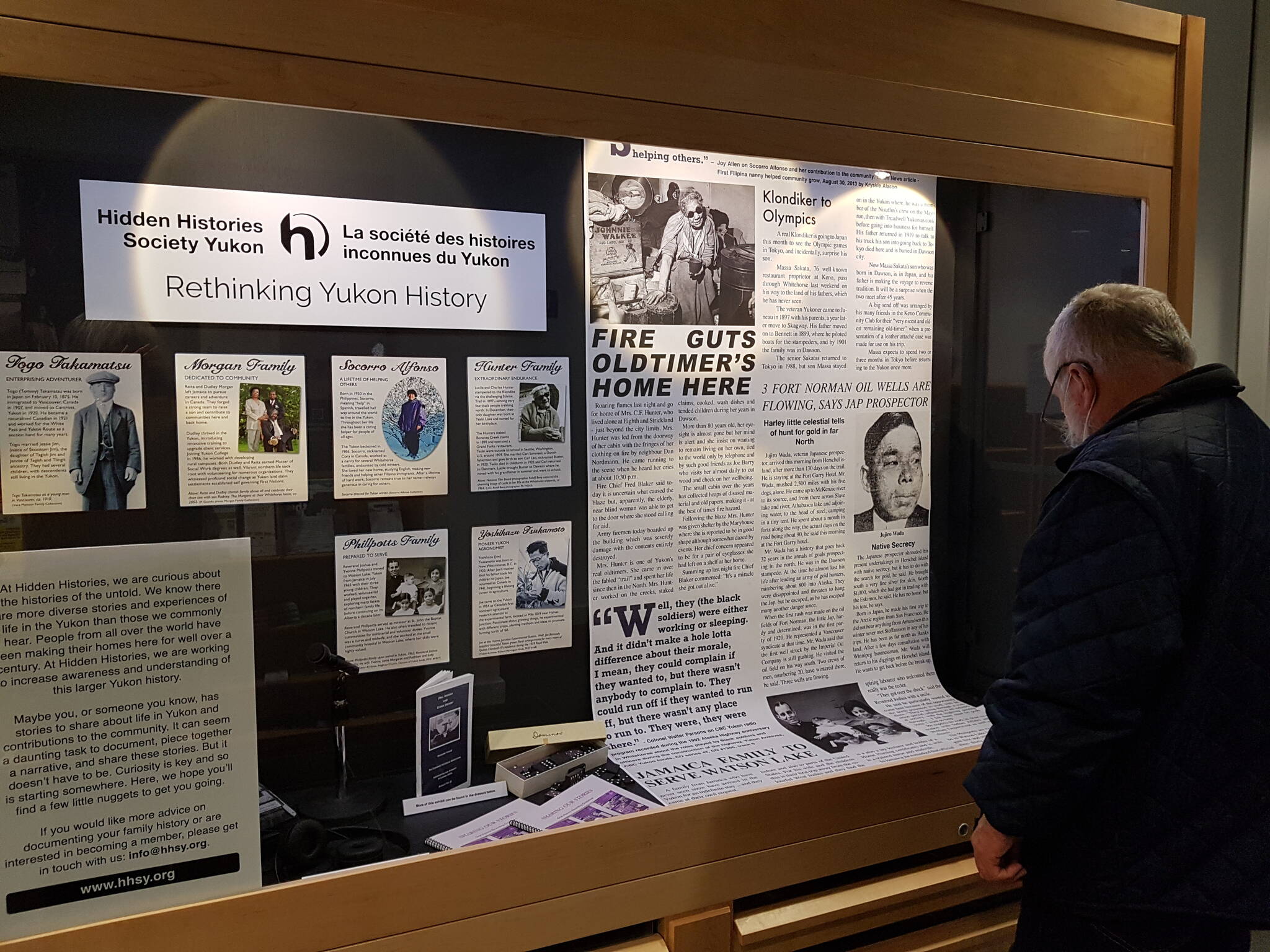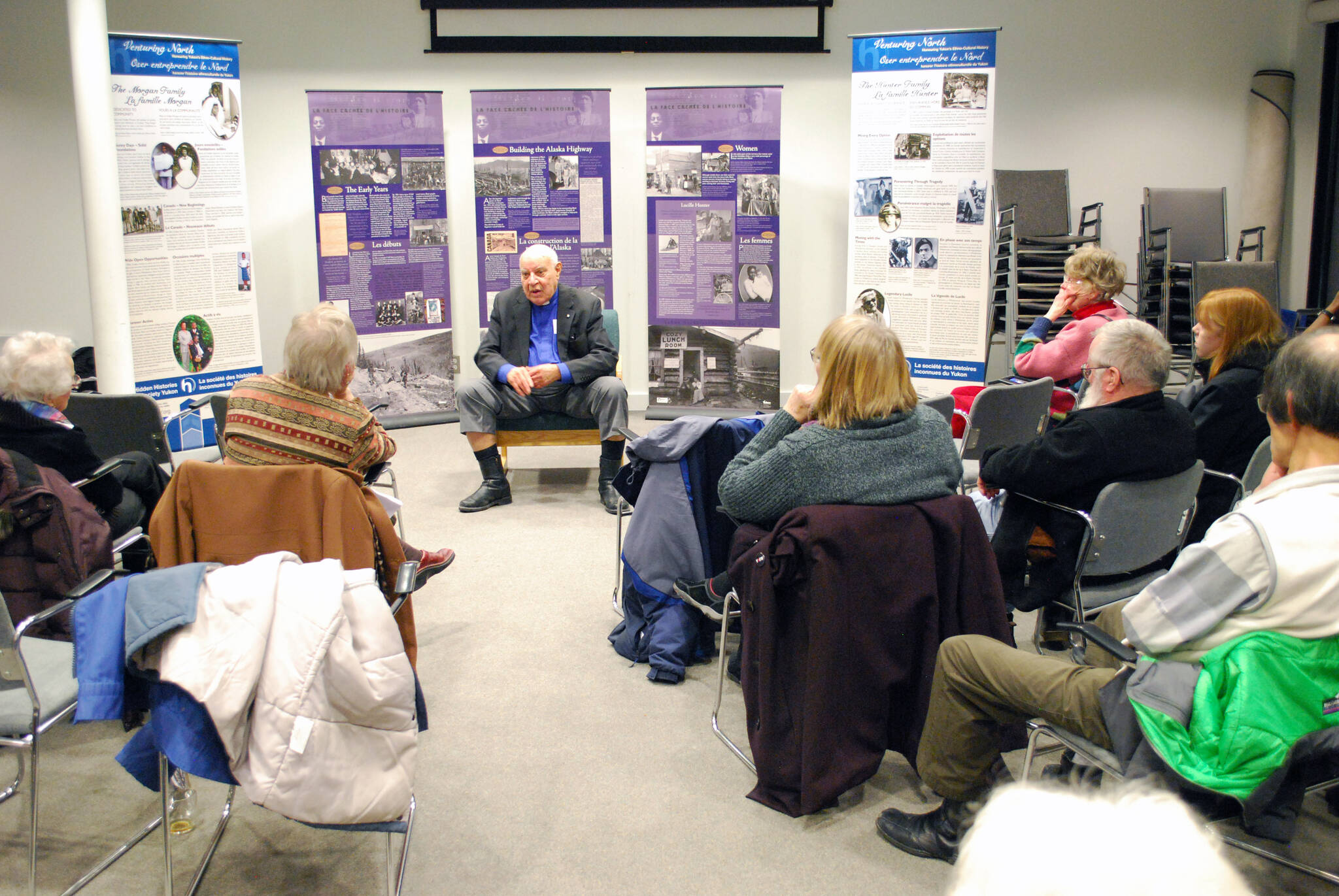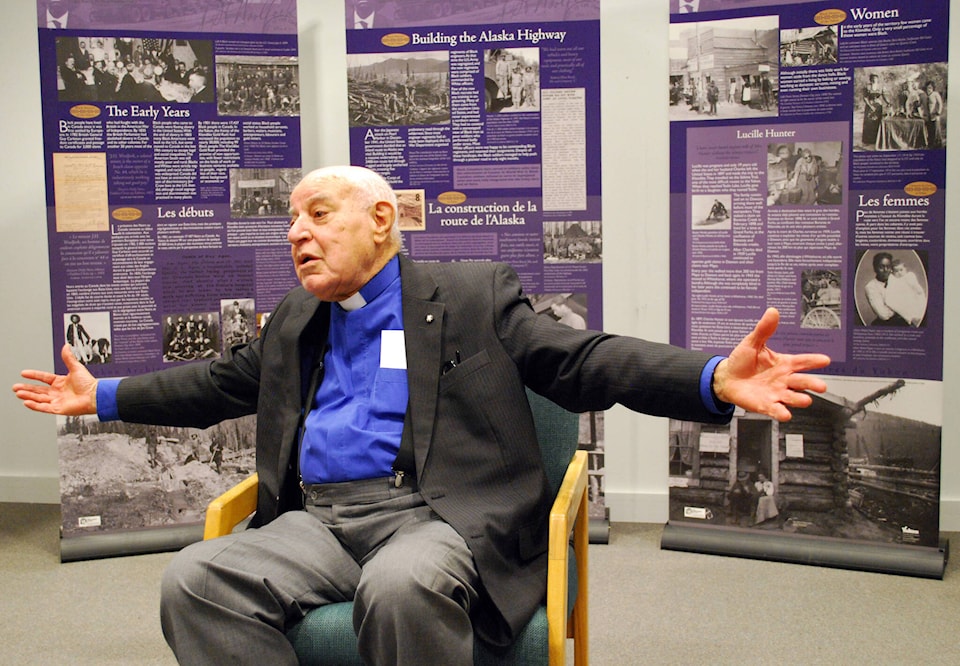There is history, and there is hidden history. Reading about the events surrounding the Klondike gold rush years ago, I came to realize that the main storytellers – Tappan Adney, Jack London, Robert Service, Laura and Pierre Berton and Martha Black, served up the history from a WASP (White Anglo-Saxon Protestant) perspective. The Poles, Blacks, Chinese and Japanese, as well as other groups, are hardly mentioned at all. They were invisible in the popular literature.
When I moved from Dawson to Whitehorse two decades ago, I encountered a group of individuals who were interested in some of the hidden histories from the Yukon’s past. Peggy D’Orsay was one of these. She was one of the professional archivists working at the territorial archives, located on the campus of Yukon University. In the year 2000, she attended a talk given by George Harper, a man researching Black history in Alaska.
D’orsay realized that nobody had sought out information on that subject in the Yukon. She said to herself, “I could do that and nobody would complain! It was something that interested me, and it was interesting how little anybody knew about any of the ethnic groups up here (Yukon).” So, she began compiling information on Yukon’s Black history from photographs in the Yukon Archive collection, from newspapers and a variety of other sources. She welcomed contributions from others.
At about the same time that she started investigating this void in the historical record, she received an inquiry. “As you know,” said Charlotte Hrenchuk, “we adopted three children who are black, and when they went to school, I realized that there was absolutely nothing that reflected them in the school curriculum. Surely there must be something that is going to resonate with them. Surely there must have been black people who went over the Chilkoot Trail.”
She went to the Yukon Archives, where she met Peggy, who by that time had started collecting material on hidden Yukon histories. Charlotte asked Peggy if she could come to her children’s school during Black History Month and talk about black history in the Yukon. And that’s how it all began.

It wasn’t long before Lillian Nakamura Maguire became involved. Her entry point was through the Human Rights Commission, where she was hired as public education officer in 2002. She was seeking a way to make human rights stories real. One person attracted her attention: Jujiro Wada. Here was an opportunity to make the history real. These minority groups came north for the same reason as everybody else, she explained to me – opportunity and adventure. And there was a lot of that in Wada’s life.
Paul Gowdie was gradually drawn into the small group of hidden history hunters after he attended a presentation at the Yukon Archives about black soldiers who helped build the Alaska Highway. That’s where he met Charlotte for the first time. “For me,” he told me, “being a minority group in the Yukon, I wasn’t sure it I was breaking ground or trail blazing. At the time I felt a little alone, culturally. I found it [Black soldiers building the Alaska Highway] inspiring. It made me want to learn about other ethnocultural groups that lived in the Yukon. The story is there, but it was unrecognized.”
Gowdie was able to contribute his experience in graphic design to develop non-personal media products for the Hidden History Society of Yukon (HHSY), which Hrenchuk, Maguire, D’Orsay and others founded in 2013. He explained that the exhibit panels he helped to design were used to inform the community at public events, but by their very nature, they were limited in content. They served as appetizers; to provide more complete stories and expanded content, he designed the website for HHSY as a repository for more comprehensive information. The website is well designed and easy to navigate and can be found at https://hhsy.org/ for anybody who is interested.
From its origins 20 years ago, this small group has an impressive track record. Initially, it was simply preparing displays of framed photos and giving power point presentations to school groups. They put on workshops at teachers’ conventions for a couple of years, and did various projects during Black History and Asian History months. Early on, they had to hustle to get any attention, but more recently they find that people are contacting them asking for the society to give interviews or participate in events.

After incorporation as a charitable society, they were able to get funding for more ambitious projects. In 2015, they hosted the “Venturing North Forum” at the Kwanlin Dun Cultural Centre, followed a short time later by the launch of two portable panel displays about the Morgan and Hunter families, accompanied by guest speaker Reverend Joshua Phillpotts. Other displays include Yoshikazu Tsukamoto, Togo Takamatsu (Japanese) and Socorro Alfonso (Philippines). All of these are available on loan from the society – the details are on the website, as is more information on Black soldiers and the construction of the Alaska Highway.
Other events followed, featuring author Lawrence Hill and slam poet Jillian Christmas, an oral history workshop (plus an updated oral history manual), and Haiku readings. In more recent times, the society sharpened its focus on compiling historical information. Bibliographies have been completed on Asian and Black history, which can be downloaded from the HHSY website.
The society recently installed a display titled “Rethinking Yukon History” in a case with pull-out display drawers in the Whitehorse Public Library. Don’t forget to check the frequent contributions that the society places on Murray Lundberg’s Yukon History and Abandoned Places Facebook page.
The society is also busy putting the finishing touches on another series of portable displays featuring the Agee family from Dawson City, Masa Sakata (Dawson, Mayo, Whitehorse), businessman Bruce Sung (Whitehorse) and the Randhawa family from Whitehorse. These should be available to the public in the near future. They have had articles published about Black and Asian history in Yukon, North of Ordinary magazine.
For two decades, the Hidden Histories Society of Yukon has been a small but very active group who have all contributed their skills, knowledge and passion to increase awareness of the numerous ethnocultural communities embedded within Yukon history. A listing of their achievements leaves me breathless.
They are always looking for new people who share their interest and their passion to join the society and help make the Yukon’s hidden histories available to all. You can contact them at info@hhsy.org.
Michael Gates is Yukon’s first Story Laureate. He is the author of six books on Yukon history. His latest, “Dublin Gulch: A History of the Eagle Gold Mine,” received the Axiom Business Book Award silver medal for corporate history. You can contact him at msgates@northwestel.net.
